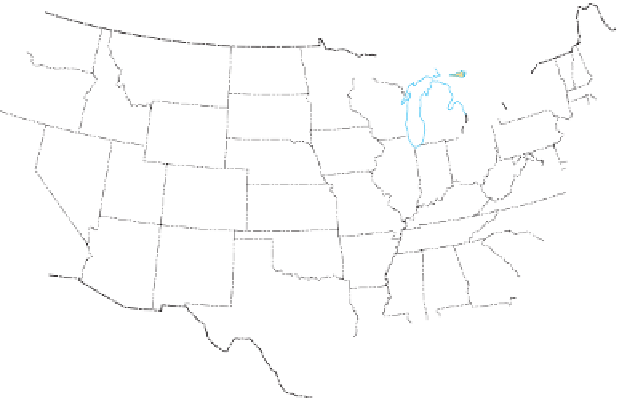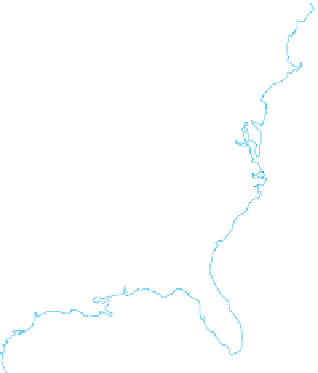Geography Reference
In-Depth Information
The problem of defi ning and delimiting perceptual
regions can be approached in several ways. One is to con-
duct interviews in which people residing within as well as
outside a region are asked to respond to questions about
their home and cultural environment. Zelinsky used a dif-
ferent technique; he analyzed the telephone directories of
276 metropolitan areas in the United States and Canada,
noting the frequency with which businesses and other
enterprises use regional or locational terms (such as
“Southern Printing Company” or “Western Printing”) in
their listings. The resulting maps show a close similarity
between these perceptual regions and culture regions
identifi ed by geographers.
Among the perceptual regions shown in Figure 1.20,
one, the South, is unlike any of the others. Even today, fi ve
generations after the Civil War, the Confederate fl ag still
evokes strong sentiments from both those who revere the
fl ag and those who revile it.
A “New South” has emerged over the past several
decades, forged by Hispanic immigration, urbanization,
movement of people from other parts of the United States
to the South, and other processes. But the South, espe-
cially the rural South, continues to carry imprints of a cul-
ture with deep historical roots. Its legacy is preserved in
language, religion, music, food preferences, and other tra-
ditions and customs.
If you drive southward from, say, Pittsburgh or
Detroit, you will not pass a specifi c place where you
enter this perceptual region. You will note features in
the cultural landscape that you perceive to be associated
with the South (such as Waffl e House restaurants), and
at some stage of the trip these features will begin to
dominate the area to such a degree that you will say, “I
am really in the South now.” This may result from a
combination of features in the culture: the style of
Figure 1.19
Mid-Atlantic Cultural Region.
One delimitation of the Mid-
Atlantic culture region.
Adapted with permission from
: H. Glassie,
Pattern in the Material Folk Culture of the Eastern United States
.
Philadelphia: University of Pennsylvania Press, 1968, p. 39.
Perceptual Regions in the United States
Cultural geographer Wilbur Zelinsky tackled the com-
plex task of defi ning and delimiting the perceptual regions
of the United States and southern Canada. In an article
titled “North America's Vernacular Regions,” he identi-
fi ed 12 major perceptual regions on a series of maps (sum-
marized in Fig. 1.20). When you examine the map, you
will notice some of the regions overlap in certain places.
For example, the more general term
the West
actually
incorporates more specifi c regions, such as the Pacifi c
Region and part of the Northwest.
PERCEPTUAL REGIONS OF NORTH AMERICA
PACIFIC
NORTH
ATLANTIC
NORTHEAST
NEW
ENGLA
ND
MIDWEST
70
°
Figure 1.20
Perceptual Regions of North America.
Adapted with permission from
: W. Zelinsky,
“North America's Vernacular Regions,”
Annals
of the Association of American Geographers
, 1980,
p. 14.
120
°
(After W. Zelinsky)
110
°



































































































































































































